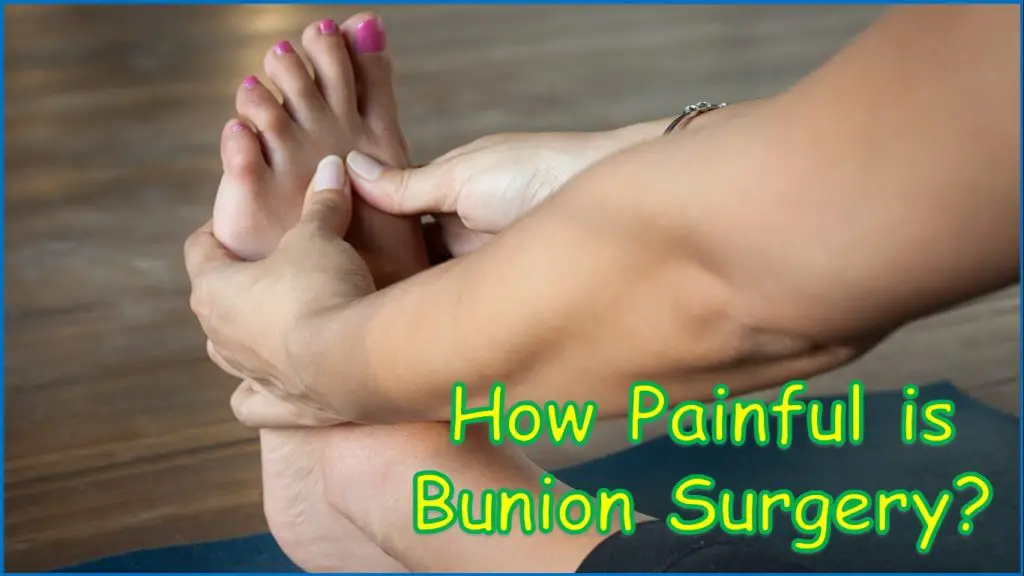How Painful is Bunion Surgery? Bunion surgery is a common procedure that can help relieve the pain and discomfort caused by bunions. If you are considering bunion surgery, it is natural to be concerned about the level of pain you may experience during and after the procedure.
In this article, we will explore everything you need to know about bunion surgery pain management and recovery, so you can make an informed decision.
What Is Bunion Surgery?
Bunions are bony bumps that form on the joint at the base of the big toe, which can cause pain, swelling, and difficulty walking. Bunion surgery involves removing the bony bump and realigning the toe joint to alleviate pain and improve function.
There are several types of bunion surgery, including traditional bunionectomy, osteotomy, and arthrodesis, which your orthopedic surgeon will recommend based on the severity of your condition.
How Painful Is Bunion Surgery?
Is bunion surgery painful? Many people worry about the level of pain they may experience during bunion surgery. Fortunately, modern anesthesia and pain management techniques make bunion surgery a relatively painless procedure.
You will receive either local or general anesthesia during the surgery, depending on the type of procedure you are having and your medical history. Local anesthesia will numb the area around the surgery site, while general anesthesia will put you to sleep.
After the surgery, you may experience some pain and discomfort, but this can be managed with pain medication prescribed by your surgeon. The level of pain you experience will depend on the type of surgery you had and your pain tolerance. However, most patients report that the pain is manageable and subsides within a few days.
Pain Management During Bunion Surgery Recovery
During the recovery period, it is essential to follow your surgeon’s post-operative instructions to ensure proper healing and pain management. You may need to wear a special shoe or boot to protect the surgical site and keep the toe in the proper position.
Your surgeon may also recommend physical therapy or exercises to help strengthen the toe and improve range of motion. It is important to avoid putting weight on the surgical site for a few weeks to allow for proper healing.
Your surgeon will also prescribe pain medication to manage any pain and discomfort during the recovery period. It is important to take your medication as directed, and not to skip doses, as this can increase your pain levels. You may also want to use ice packs or heating pads to help manage pain and swelling.
When To Seek Medical Attention?
While some pain and discomfort are normal during the recovery period, it is essential to monitor your symptoms and seek medical attention if you experience any of the following:
- Severe or increasing pain
- Fever
- Excessive swelling or redness
- Drainage or discharge from the surgical site
- Numbness or tingling in the toes
These symptoms could indicate an infection or other complications, which require prompt medical attention.
Final Thoughts: How Painful Is Bunion Surgery?
Bunion surgery can be a relatively painless procedure with proper pain management and post-operative care. While there may be some discomfort during the recovery period, this is typically manageable and subsides within a few days.
If you are considering bunion surgery, it is essential to have a consultation with your orthopedic surgeon to discuss your options and what to expect during the procedure and recovery period. With proper pain management and post-operative care, bunion surgery can provide significant relief and improve your quality of life. [learn more]
If you or someone you know is considering bunion surgery or has recently undergone the procedure, share this informative article on “How Painful is Bunion Surgery? Guide to Pain Management” to help them manage their pain and discomfort during the recovery process. This article provides valuable insights into the levels of pain patients can expect after the surgery and offers tips on effective pain management strategies. By sharing this article, you could make a significant difference in someone’s recovery journey and help them feel more prepared and informed. So, don’t hesitate to share it with anyone who may benefit from it!
See Also:
- The Connection Between Bunion Pain and Foot Alignment
- Bunion Pain Relief Home Remedies
- Best Pain Relief Pads for Bunions
- What Makes Bunions Painful?
- Bunion Causes: Know What’s Behind Our Painful Foot Deformity
- Benefits of Bunion Surgery: Relieve Pain & Improve Mobility
- Do Flip Flops Cause Bunions? Are Flip Flops Bad for Bunions?
- 10 Best Cute Sandals That Hide Bunions

Leave a Reply